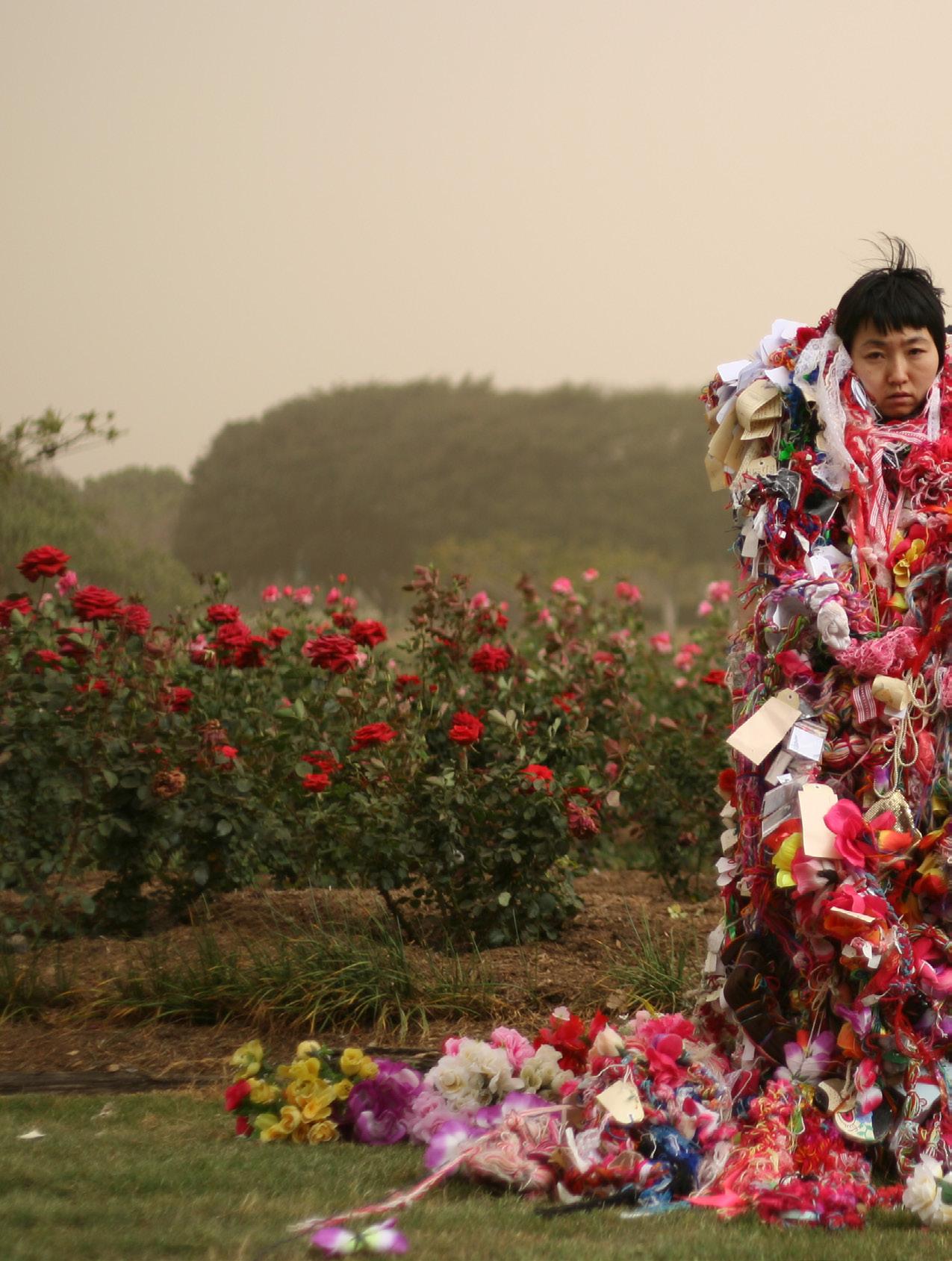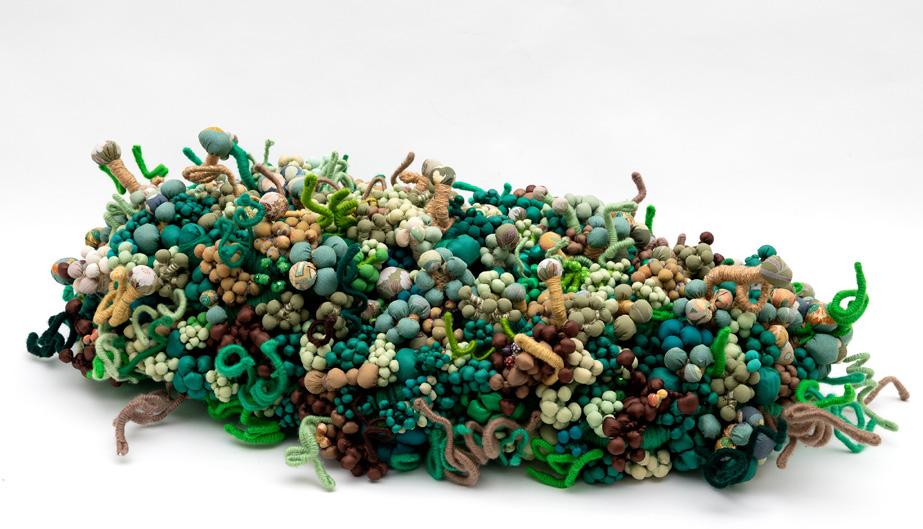
4 minute read
Hiromi Tango: Looking Back/Looking Forward
By Hannah Sharpe

Hiromi Tango, Hiromi Hotel, Mixed Blood, 2011, Primavera, Museum of Contemporary Art
Ahead of Hiromi Tango’s upcoming solo exhibition, New Now, opening September 3 at Sullivan+Strumpf, Sydney, we look at the moments which have shaped and defined the multidisciplined artist.
Tango is a Japanese-Australian artist, who creates visually rich, immersive sculptural installations that invite audience interaction and reflection. Her artistic practice draws on personal experience with universal mental health challenges - loss, fear, depression and alienation. Interested in the therapeutic ability of art, Tango looks to neural science for inspiration, and explores the notion that light, colour and the process of creation can encourage emotional healing - both for the artist and her audience.
Born in 1976 in Shikoku, Japan, Tango grew up in a culture entrenched in tradition, one where women frequently experienced gender inequality. Her childhood observations of this disparity within her own home, and the combative environment that it activated, were pivotal in establishing her practice of embracing the meditative and healing qualities of art making.
Tango’s works often incorporate her family’s kimonos. Through the process of weaving and thus changing the kimono’s form, she unwraps and resolves “the relationship between generations of women, the challenges of reconciling traditional expectations with contemporary realities, and the strength and depth of our connections in spite of these challenges”.
Tango migrated to Australia shortly after completing her studies at Japan Women’s University in 1998. She presented her first formal exhibition in Australia, a live installation piece at Brisbane’s Raw Space Galleries in 2006. Pushing the boundaries of personal and public space, Tango lived in the gallery windows for six weeks. She invited people passing by to enter her private world and engage with her belongings in what became a synergetic performance.
Opening a dialogue of exchange, this significant project was the beginning of her ongoing installation habitation series, Hiromi Hotel. Often collaborative, these sitespecific sculptural pieces incorporate Tango’s collection of donated fabrics and materials that the artist says “contain significant memories – of the mother, the broken relationships, childhood or deceased family members. This approach is central to why I make art – the healing and therapeutic properties and the process of dealing with difficult memories”.
Motherhood, for Tango, simultaneously sparked immense happiness and triggered a difficult period of postnatal depression. This profoundly challenging condition was the impetus for several powerful and momentous performances.
Conceived during the infamous dust storm which engulfed Brisbane in 2009, Insanity Magnet was the first of this series. Tango adorned herself in her signature woven textiles and confronted her depression against an apocalyptic backdrop in New Farm Park.

Hiromi Tango, Kimono’s Will - Nature, 2020, kimono silk and textile, 28 x 100 x 55 cm. Photo credit: Aaron Anderson
“On November 7th, 2008, I became a mother, and then for approximately one year was unable to engage with others through art. Those collective feelings, emotions and thoughts, along with my own, grew so big inside of my body and mind that I became completely unable to engage in everyday life at the time. This was one of the most threatening experiences for me”.
Mixed Blood, Tango’s work for 2011 Primevera at the Museum of Contemporary Art, also stemmed from the emotional complexity of motherhood. Performed in an embellished cocoon-like enclosure, the work was inspired by the impending birth of her second baby and focused on Tango’s feelings of anxiety concerning how her new child would once again change her sense of self.
Creating open and honest conversations about mental health through community engagement projects and exploring the potential for art-making processes to promote healing is fundamental to Tango’s practice. In 2012 Tango began what she describes as a “life changing” residency in Derby, Western Australia, a town with a traumatic indigenous history and a staggering rate of youth suicide. Tango worked with children from the Derby Youth Centre to create Lizard Tail. The large sculpture embodied the many painful memories from the community, forming the shape of a lizard tail, a metaphor for the seemingly endless cycle of poverty and suffering.
Since its original inception, the Lizard Tail series has evolved and has been exhibited in several different iterations - Magic Object: 2016 Adelaide Biennial of Australian Art; Lizard Tail (Breaking Cycle) Singapore Art Museum (2016) and most recently at Melbourne Art Fair and TarraWarra Biennial (2018).
In her upcoming exhibition at Sullivan+Strumpf, New Now, Tango presents a rich accumulation of sculpture, paintings and drawings developed in 2019 and 2020, a period in which her hometown of Tweed Heads was engulfed in bushfire, and she was isolated from her ageing parents in Japan due to COVID-19.
“The series that make up New Now”, Tango says, “each represent an artistic response to overwhelming situations, and a quest for healing. How do we define now? How can we build resilience? How do we adapt to new realities? How can we build hope in this challenging time?”.

Hiromi Tango, Hiromi Hotel, 2011, Mixed Blood artist performance, Primavera Museum of Contemporary Art

Hiromi Tango, Hiromi Hotel, 2011, Mixed Blood artist performance, Primavera Museum of Contemporary Art

Hiromi Tango, Dance, 2013, Jackson Bella Room, Museum of Contemporary Art










